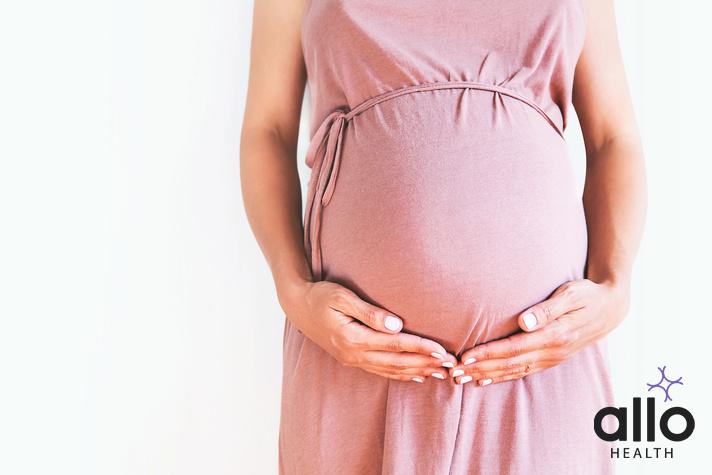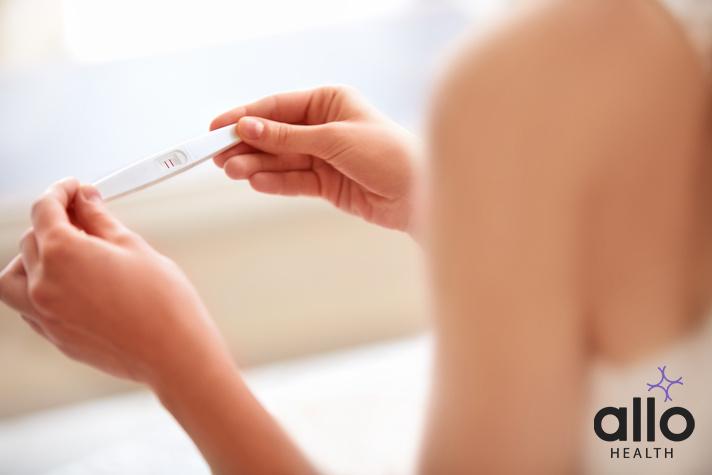Is Finger Test for Pregnancy Safe?

Allo Health is dedicated to personalized well-being, offering support and trusted information tailored to individual health goals. The platform emphasizes human-generated content, led by a distinguished medical team of experts, including physicians and sexual health specialists. Their commitment to credibility involves rigorous fact-checking, authoritative research, and continuous updates to ensure accurate, up-to-date information. Allo Health's unique approach goes beyond conventional platforms, providing expert-led insights and a continuous commitment to excellence, with user feedback playing a crucial role in shaping the platform's authoritative voice.

Dr. Warisha holds an MBBS degree from GMERS Medical College, Ahmedabad. She has an in depth experience on sexual and reproductive health and rights.
Why This Was Upated?
Our experts continually monitor the health and wellness space, and we update our articles when new information became available.
Updated on 09 April, 2024
- Article was updated as part of our commitment to diversity, equity, and inclusion.

"The following blog article provides general information and insights on various topics. However, it is important to note that the information presented is not intended as professional advice in any specific field or area. The content of this blog is for general educational and informational purposes only.
Book consultation
The content should not be interpreted as endorsement, recommendation, or guarantee of any product, service, or information mentioned. Readers are solely responsible for the decisions and actions they take based on the information provided in this blog. It is essential to exercise individual judgment, critical thinking, and personal responsibility when applying or implementing any information or suggestions discussed in the blog."
As soon as a woman suspects she could be pregnant, she faces how to confirm her suspicions. While home pregnancy tests are widely available and accurate, some women prefer the low-tech finger test method. In this article, we will explore what the finger test is, how it works, and everything else you need to know about this ancient method of pregnancy detection.
What is Finger Test for Pregnancy?
- The “finger test for pregnancy” is a popular but scientifically unproven method of determining pregnancy.
- In this method, a woman can supposedly detect pregnancy by using a simple finger-based technique.
- However, there is no medical or scientific basis for this claim.
- In the “finger test,” a woman is instructed to insert her index finger into her vagina and perform certain movements or observations, such as changes in cervical position or firmness. Supposedly, these changes are believed to indicate pregnancy.
- It’s crucial to emphasise that the finger test for pregnancy lacks scientific validation and should not be relied upon as an accurate means of detecting pregnancy.
How Does Finger Test Work?
- The finger test for pregnancy is a simple technique that involves inserting the middle finger into the vagina and feeling the cervix for changes in position, texture, and consistency.
- During pregnancy, the cervix is softer and the position may be higher up in the vagina than usual.
- The finger test is based on the theory that a woman’s own tactile senses can detect these changes.
- The finger test should not be used as a substitute for a pregnancy test or medical advice from a healthcare professional.
- While it may provide some indication of pregnancy, it is not a reliable or definitive method of diagnosis.
- Additionally, inserting anything into the vagina carries a risk of infection or injury, so it’s important to practice proper hygiene and caution when attempting the finger test.

Comparison of the Finger Test to Other Pregnancy Tests
- Compared to other pregnancy tests, such as home pregnancy tests or blood tests, the finger test is not considered as reliable or accurate.
- Home pregnancy test kits work by detecting the presence of human chorionic gonadotropin (hCG) in a woman’s urine, while blood tests measure hCG levels directly in the blood.
- These methods are generally considered to be more accurate and reliable than the finger test, although they may not detect pregnancy as early in some case.
- The finger test has no scientific evidence and should not be relied upon as the sole indicator of pregnancy.
- In fact, some medical professionals consider the finger test to be a myth and advise against using it as a means of determining pregnancy.
- It is always best to consult with a healthcare provider and use medically approved methods of pregnancy testing for accurate results.
Early Pregnancy Symptoms and Signs to Look Out For
For women who prefer a more reliable method or who want to double-check their results, there are a number of early pregnancy symptoms and signs to look out for. These can include:
- Missed periods
- Nausea and vomiting
- Tender breasts
- Fatigue
- Frequent urination
If you experience these symptoms, taking a pregnancy test or consulting with a healthcare provider to confirm your suspicions is important.

Key Takeaways
- The finger test for pregnancy is a non-scientific method of detection based on tactile observations.
- It involves inserting a finger into the vagina to feel for changes in cervical position and texture.
- This method lacks medical validation and shouldn’t replace proper pregnancy tests or professional advice.
- Home pregnancy tests and blood tests are more reliable and accurate in detecting pregnancy.
- Early pregnancy symptoms like missed periods, nausea, and breast tenderness are more reliable indicators.
- Consulting a healthcare provider is crucial for accurate pregnancy confirmation and guidance.
Frequently Asked Questions
Q. Can the finger test accurately determine pregnancy?
A: No, the finger test is not a scientifically validated or accurate for determining pregnancy. It involves checking changes in cervical position or mucus consistency, but these observations are unreliable pregnancy indicator. For accurate results, it is recommended to use medically approved pregnancy tests, which detect the hormone hCG in urine or blood.
Q. What changes should I look for during the finger test if I suspect pregnancy?
A: While some sources suggest changes like a higher, softer cervix during pregnancy, these changes can also occur due to other factors. It’s important to note that relying on cervical position or mucus changes for pregnancy detection is not reliable. It’s best to use reputable home pregnancy test kits or consult a qualified doctor to confirm pregnancy.
Q. Are there any risks associated with attempting the finger test for pregnancy?
A: Checking cervical position or mucus using the finger test carries a risk of introducing bacteria or causing discomfort if not done hygienically. It’s important to ensure clean hands and proper hygiene to prevent infections. Depending solely on the finger test may lead to inaccurate results and delay in seeking proper medical care for pregnancy confirmation.
Q: How do home pregnancy tests work?
A: Home pregnancy tests work by detecting the presence of a hormone called hCG (human chorionic gonadotropin) in a woman’s urine. This hormone is produced during pregnancy.
Q: How accurate are home pregnancy tests?
A: When used correctly, home pregnancy tests are highly accurate. However, factors like testing too early or improper usage can affect the results.
Q: Can a home pregnancy test give a false negative result?
A: Yes, it’s possible to get a false negative result if the test is taken too early or if it’s not used correctly. If pregnancy is still suspected, it’s advisable to retest in a few days.
Q: what should I do if my home pregnancy test is negative but I haven’t had my period?
A: If the test is negative but pregnancy is still suspected, it’s advisable to wait a few days and retest. If uncertainty persists, consulting a healthcare provider is recommended.






































